Tips on rebuilding and maintenance of hydraulic clutch master cylinder.
Why master cylinders fail?
The main reason hydraulic master cylinders (MC) fail is deterioration of or damage to their rubber parts - external dust boot or internal seal or valve. When the valve seal fails, master cylinder is unable to raise the proper pressure when actuated by the pedal. If plunger seal fails MC starts losing the fluid to the outside. Deformed, ruptured or hardened dust boot does not affect the function of the unit right away, but, if not replaced, the damage from failed dust boot is worse than from a damage from the seals. Once the dust boot has failed, dirt and moisture have easy access to the cylinder bore outlet. This causes brake fluid contamination and crystallization, also plunger and internal surface of master cylinder bore oxidation. Rusted plunger can damage the surface of the cylinder bore and eventually even get stuck.
If working properly clutch master cylinders don't require any special attention except for periodic checking of the external dust boot. Failing dust boot needs to be replaced as soon as possible.
If no damage has been done to the surface of the cylinder bore and the plunger is in a good condition, rebuilding the MC is a relatively simple procedure. Rebuild kits are readily available. The procedure of such rebuild is described in car manuals and we are not going through all the steps of this procedure. We would like to point out just a few key moments that need to be observed in order to ensure a prolonged and healthy life of the rebuilt unit.
What is the main secret of any hydraulic unit rebuild? It's cleanliness and good lubrication. (Apart from following the procedure described by the manufacturer exactly. )
The main tip in rebuilding hydraulic systems is clean work environment, clean tools, fresh and clean lubricants. By clean work environment I mean - no dirt and no contact with anything else except recommended hydraulic fluid and recommended lubricants. Importantly, no contacts with petroleum based products (gasoline, motor oil, chassis grease).
Once the above have been observed, after thorough cleaning all parts with recommended chemicals or fluids, a few items need to be mentioned about the master cylinder assembly.
First, you need to make sure that internal surface of the cylinder bore and the plunger are smooth. They usually are, we just need to make sure nothing was damaged during the process of cleaning.
Once all replacement parts have been installed and assembled, lubricate all necessary parts.
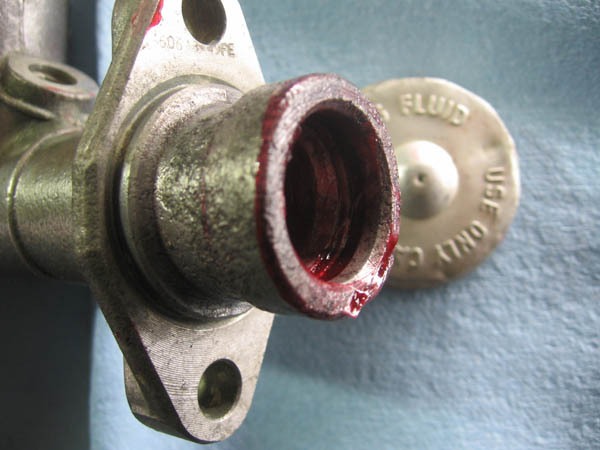 Smear the inner surface of the cylinder bore with red rubber grease.
Smear the inner surface of the cylinder bore with red rubber grease.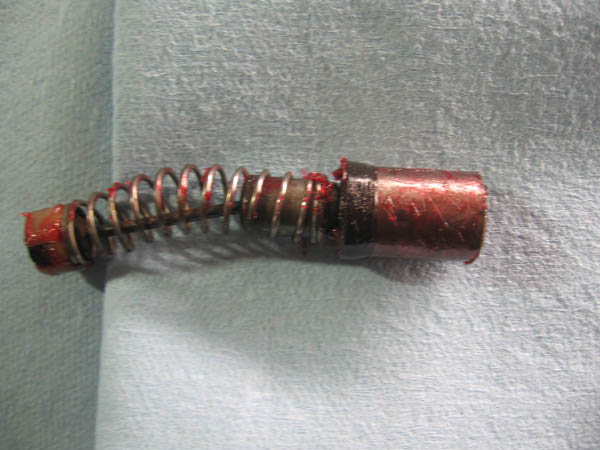 Do the same with the plunger seal and the plunger itself. Using grease will help the plunger seal to go into the cylinder smoothly.
Do the same with the plunger seal and the plunger itself. Using grease will help the plunger seal to go into the cylinder smoothly. 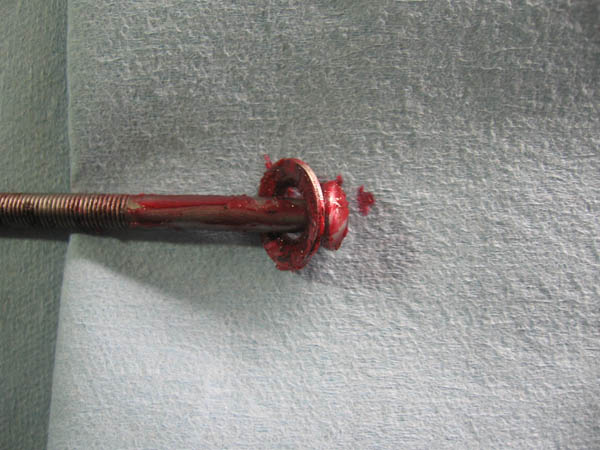 Smear the pushrod and retaining washer with red rubber grease.
Smear the pushrod and retaining washer with red rubber grease. 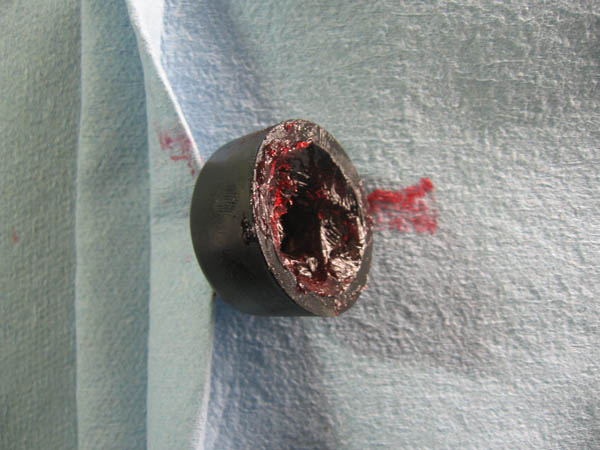 Pack the dust boot with red rubber grease, as well.
Pack the dust boot with red rubber grease, as well.Now, you are ready to assemble the master cylinder. Push the plunger into the bore, insert the pushrod with retaining washer and secure them with a snap ring.
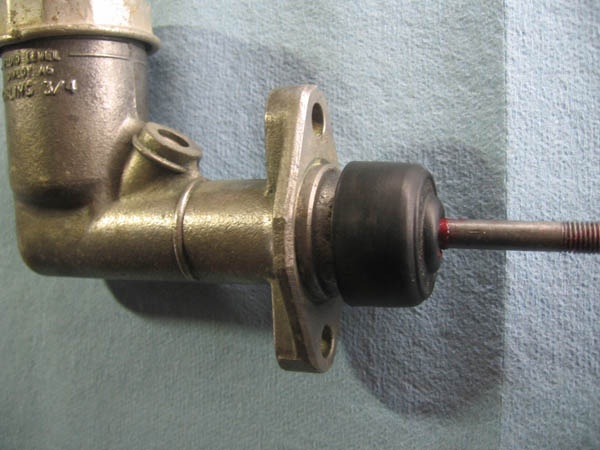 Press the dust boot in place and clean all excess of the grease. You are done with the rebuild, your clutch master cylinder is ready to be installed in your car.
Press the dust boot in place and clean all excess of the grease. You are done with the rebuild, your clutch master cylinder is ready to be installed in your car.